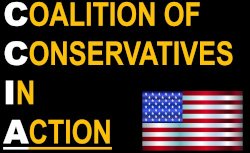I am always amazed by adults that defend the school they went to and then proceed to describe, without realizing it, how that school failed them which thus in many avenues made them feel as failures so never tried at them again. “I am not good at math or memorizing, or I am a slow reader, or I just don’t get it.” Worst of all is the loss of the ability to be creative and take risks. And then, even worse, some pass these degraded thoughts unknowingly on to their children.
In school being creative, which means going outside the norm, is not encouraged but is highly discouraged especially in the early grades. We are forced into being compliant, to not challenge the status quo or push the envelope of our true ingrained individual potential/nature and definitely to not test the bounds of the authority that ruled over us for fear of their judgement and wrath. It truly is about power and control.
Children do not go to school because they like school. Obviously, as shown by the covid lockout physical and mental behavioral backlash by kids, they go because that is where their friends are. It has no bearing on the adult decided purpose of school that fails to acknowledge that a system of merit with time constraints automatically sets kids up for failure. Watch a baby learn to walk. They will do it in their time frame all the way to mastering it. There is no, “Sorry kid, time to move you on to skipping”. That is what school does. “You can catch up on walking in summer school.”
What is the purpose of public school in America?
– Through much of the 1800s the central role was to preserve the American Democracy and inculcate (to train/infuse) democratic values. Some of these desires were fueled by racist, xenophobic, and anti-Catholic sentiments. *
– In the 1890s through the early 1900s, competition with a fast-rising industrial Germany constituted a mini crisis. America shifted by creating a new role for public education: to prepare everyone for vocations. That meant providing something for everyone, with a flourishing of tracks and courses and increased enrollment to high school, which in 1905 just one third of children that enrolled in first grade ever attended. * (The system was a mandatory 12-year sorting system of children that fed the American industrialization with workers sorted by educations standardized system of merit that is still maintained today through state testing standards).
Compulsory education laws: Prior to the 1852 Massachusetts law and in other states without such laws, education typically was provided by private schools run by churches. Since they also charged tuition, poorer children were excluded or received informal schooling at home. That would change during the immigration boom between the 19th and 20th centuries, as education was seen as the best way to assimilate immigrant children. https://www.findlaw.com/education/education-options/compulsory-education-laws-background.html
– Post WWII and the late 1970s and early 1980s. As Japan took off technologically, as with the earlier Germany threat, to keep the country competitive America turned to a wider array of courses with much surrounding science, math, and engineering. At the same time the nation became consumed by how students were doing gauged by average test scores.
– 1983 the national report “A Nation at Risk” came out that showed the continually expanding myriad of cafeteria style course offerings confused what were the appetizers and desserts versus the main course. The something for everyone became a vice instead of a virtue. Some of this was a result of the affluence and security of our society which moved course selection away from the more challenging core subjects into the easier softer humanities and social sciences resulting in the following:
– 2000. The Primary purpose shifted again. This time society asked schools to eliminate poverty by not just focusing on schools’ average test scores, but instead to make sure children in every demographic reached a basic measure of proficiency in core subjects. The theory was that academic achievement unlocked opportunity. *
– As that consensus has eroded (which is part of the reason for the extreme backlash from educators to change what they are doing again which says clearly, the system they chose as a career path is failing our children) there has been some drift in the primary purpose of schooling from a political perspective. Given that erosion, clarifying an individual school’s purpose is perhaps now an even more vital conversation to have to build a more coherent school model. *
– 2022. Public school is fast moving to be a system of social engineering as it was during the 1800s but with a new slant. Even though it is failing to prepare our children for their future by continuing to use a totally outmoded model, in order to avoid its disruption that issue is being confused with politicized social issues and the failed system not addressed, by creating a one size fits all that will result in academic preparedness that fits nobody.
We need to openly engage in this conversation across our communities so that entrenched nonstudent centric bureaucracies lose their grip on past practices that clearly leave our children unprepared for the world that they will face.
*”From Reopen To Reinvent, Recreating School For Everyone” 2022 Michael B Horn and “Disrupting Class” 2017 by Clayton Christensen.
Let’s begin, but first one must study the subject so that they are versed in the challenges we face. References are *.
Rob Wood
![]()
